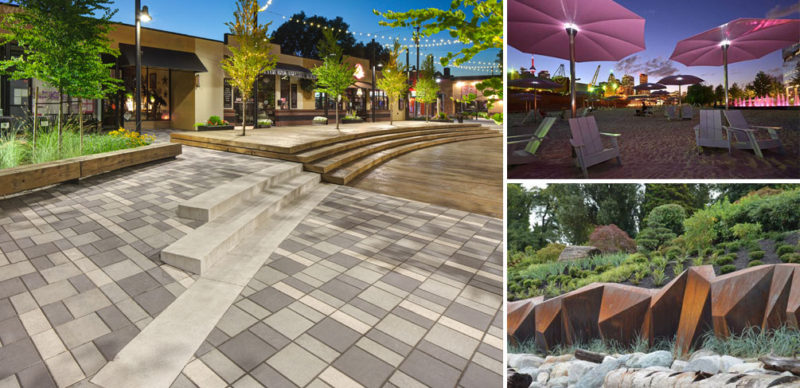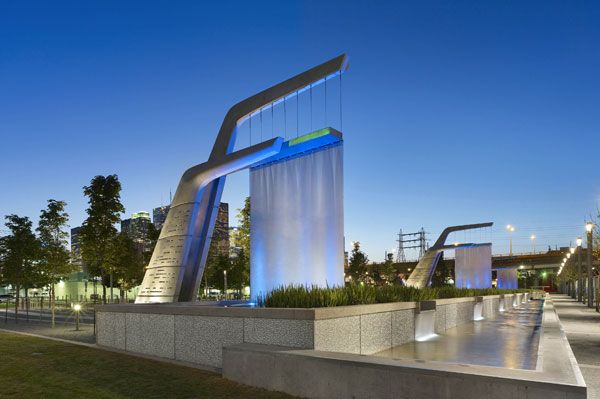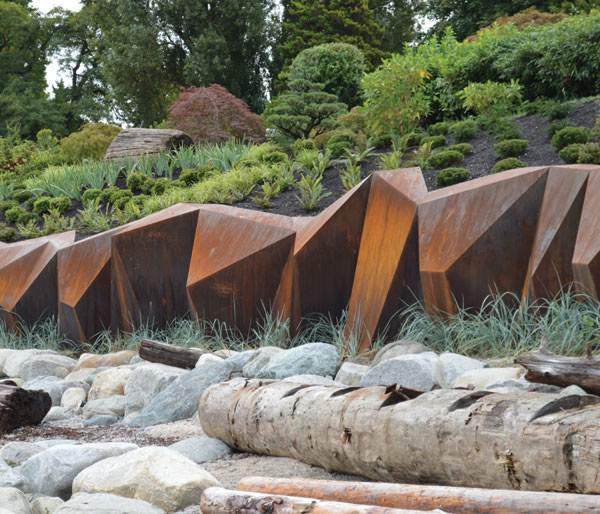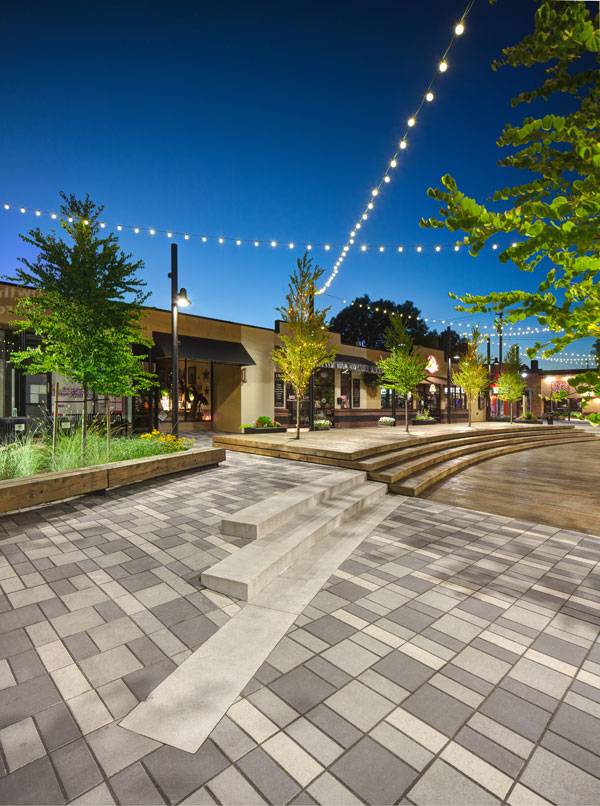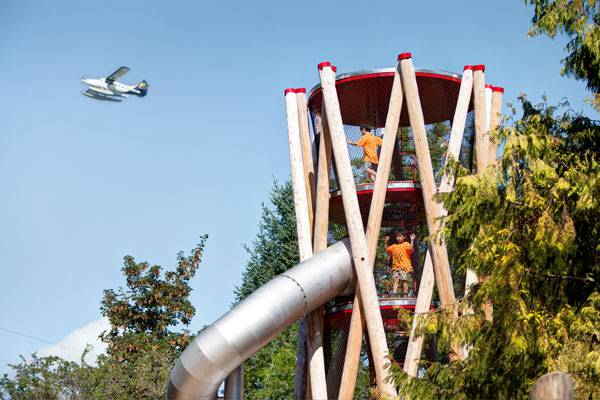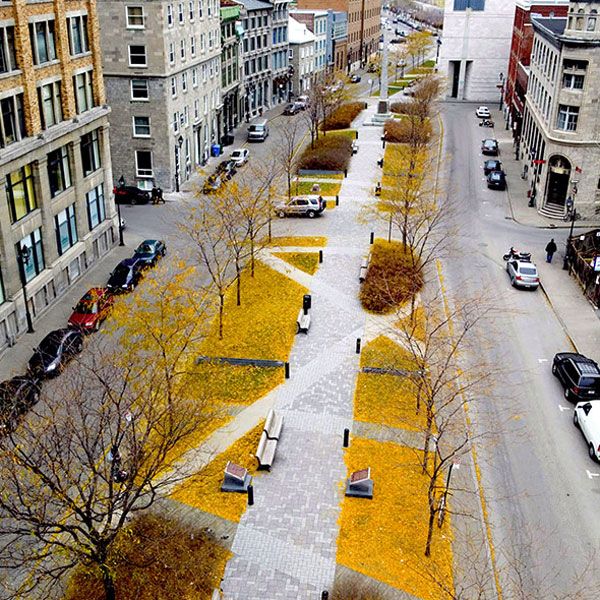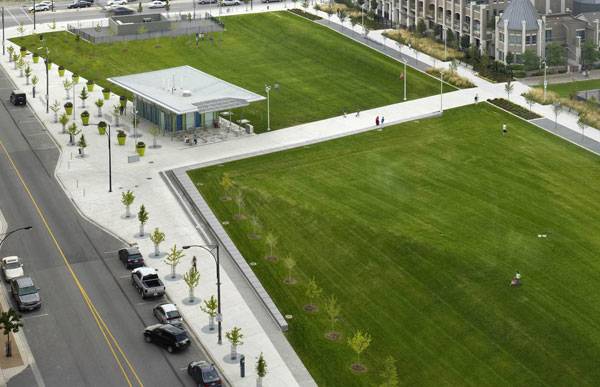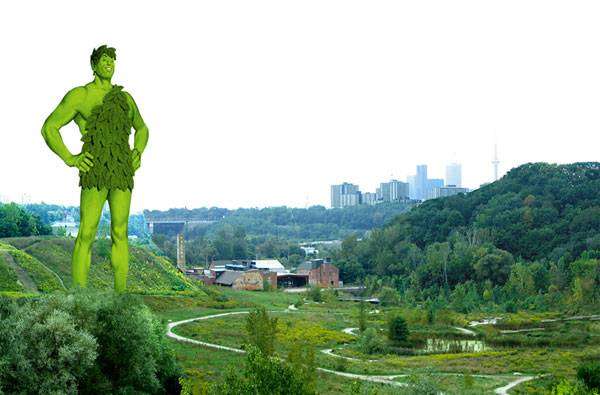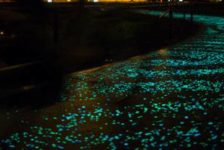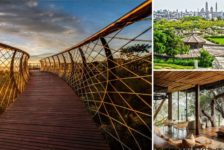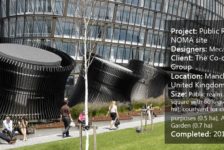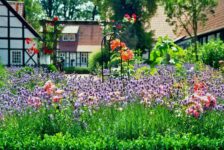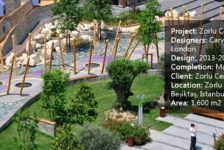Article by Paul McAtomney Following up on our world series, we have selected 10 awesome projects that perfectly represent landscape architecture in Canada today. With Canada having cities such as Vancouver, Toronto, and Calgary consistently scoring top marks in global liveability rankings, it is no wonder that the country also possesses a plethora of exemplary works of landscape architecture that are as diverse and varied as the country’s geography. Today, we take a look at 10 consummate projects that are excellent examples of landscape architecture in contemporary Canada.
Landscape Architecture in Canada
1. Sherbourne Common Park, by PFS Studio, Toronto, Ontario Sherbourne Common is a new urban park located on Toronto’s waterfront. This hybrid park-infrastructure folds in water treatment as a major organizational logic, resulting in a multifunctional piece of public space and landscape infrastructure. Sherbourne is one of the first LEED Gold certified parks in Canada, and successfully synthesizes the region’s quintessential lakeshore landscapes of the woods, the water, and the green with Toronto’s urban realm.
2. Sugar Beach, by Claude Cormier + Associés, Toronto, Ontario This 8,500-square-meter urban beach sits on a former parking lot site in an industrial area in Toronto. It is a sequel to HtO, the waterfront’s first beach park, also designed by Cormier. The designers took inspiration from the adjacent Redpath Sugar Factory, scattering the site with “sugar” in the form of rock “candies” and pink umbrellas. The result is a playful and vibrant destination that facilitates contextual exchange with the surrounding fabric. 3. Metamorphous, by Paul Sangha Landscape Architecture, Vancouver, British Columbia Designed as a unique solution to negate foreshore erosion, provide bank retention, and dissipate wave energy in front of a waterfront residence, this Cor-ten steel sculpture is an abstraction of sandstone formations seen on Saturna Island in British Columbia. The abstract shape of the wall provides not only a striking tectonic appearance, but also doubles as an aggregation device for sand and detritus washed ashore, in turn providing an armature for the coastal property. 4. McBurney Lane, by Hapa Collaborative, Downtown Langley, British Columbia Over a period of time, McBurney Lane in downtown Langley had dissolved into vacant and neglected public space. The revitalization of the space, by Hapa Collaborative, reconnects the lane to the surrounding fabric of Langley and strengthens internal pedestrian networks, creating a series of flexible social spaces that integrate permeable surfaces, drought-tolerant planting and rainwater infiltration as part of the city’s sustainability agenda. 5. Terra Nova Play Experience, by Hapa Collaborative, Richmond, British Columbia As part of the Terra Nova Rural Park in Richmond, Hapa Collaborative has designed The Terra Nova Play Experience — an adventure area that integrates “nature play” into the site’s agrarian landscape. Several years in the making, the play experience borrows the form and character of surrounding landscape typologies — intertidal zones, dykes, remnant sloughs, and agriculture — to create a physically challenging and provocative play space. 6. Place d’Youville, by Claude Cormier + Associés, Montreal, Quebec As a historical square in Old Montreal, Place d’Youville forms the meeting point of important roads at the gateway to the city’s waterfront and Old Port. Conceptually, the designers responded to the site’s archaeological significance and history by conceiving of a “quilt” — a protective blanket overlaid upon the square. This results in a beautiful intersection of materiality, including wood, concrete, granite, and limestone, that creates direct material links with the history of the Old Port. 7. Community Common Park, by Janet Rosenberg & Studio, Mississauga, Ontario Community Common Park was designed as a flexible and functional green space in downtown Mississauga. The design is minimalist in nature, comprising two distinct open grass areas and the site’s perimeter defined by allées of trees that connect to the wider site context. Topographical exchange defines the park’s character, as the designers have chosen to terraform a new geometric identity, giving the park a distinctive sculpted look, defining the park’s interior, and allowing users a novel topographic experience in downtown Mississauga. 8. The Canadian Museum of Civilization Plaza, by Claude Cormier + Associés, Gatineau, Quebec The architecture of the Canadian Museum of Civilization in Gatineau exemplifies the country’s landscape — its glaciers, the Canadian Shield, and the Great Plains. Missing from this robust conceptual metaphor for some time, however, was the Prairie Landscape. The vast plaza encapsulated by the museum lay vacant for much of the year until the designers deployed an urban prairie onto the plaza landscape. Topography and sinuous movement now characterize the space, create a microclimate, and complete the site’s concept.
Photo credit: Canadian Museum of Civilization by Claude Comier Associates

Poppy Plaza by Marc Boutin Architectural Collaborative and Stantec Consulting, Calgary, Canada
Landscape Architecture in Canada
Glancing at these 10 examples provides us with a small panorama of the development of designed landscapes in Canada. Landscape architecture in Canada makes a major contribution to the profession writ large. What other pieces of elemental Canadian landscape architecture would you have liked to see? Go to comments Recommended Reading:
- Becoming an Urban Planner: A Guide to Careers in Planning and Urban Design by Michael Bayer
- Sustainable Urbanism: Urban Design With Nature by Douglas Farrs
Article by Paul McAtomney
Published in Blog

